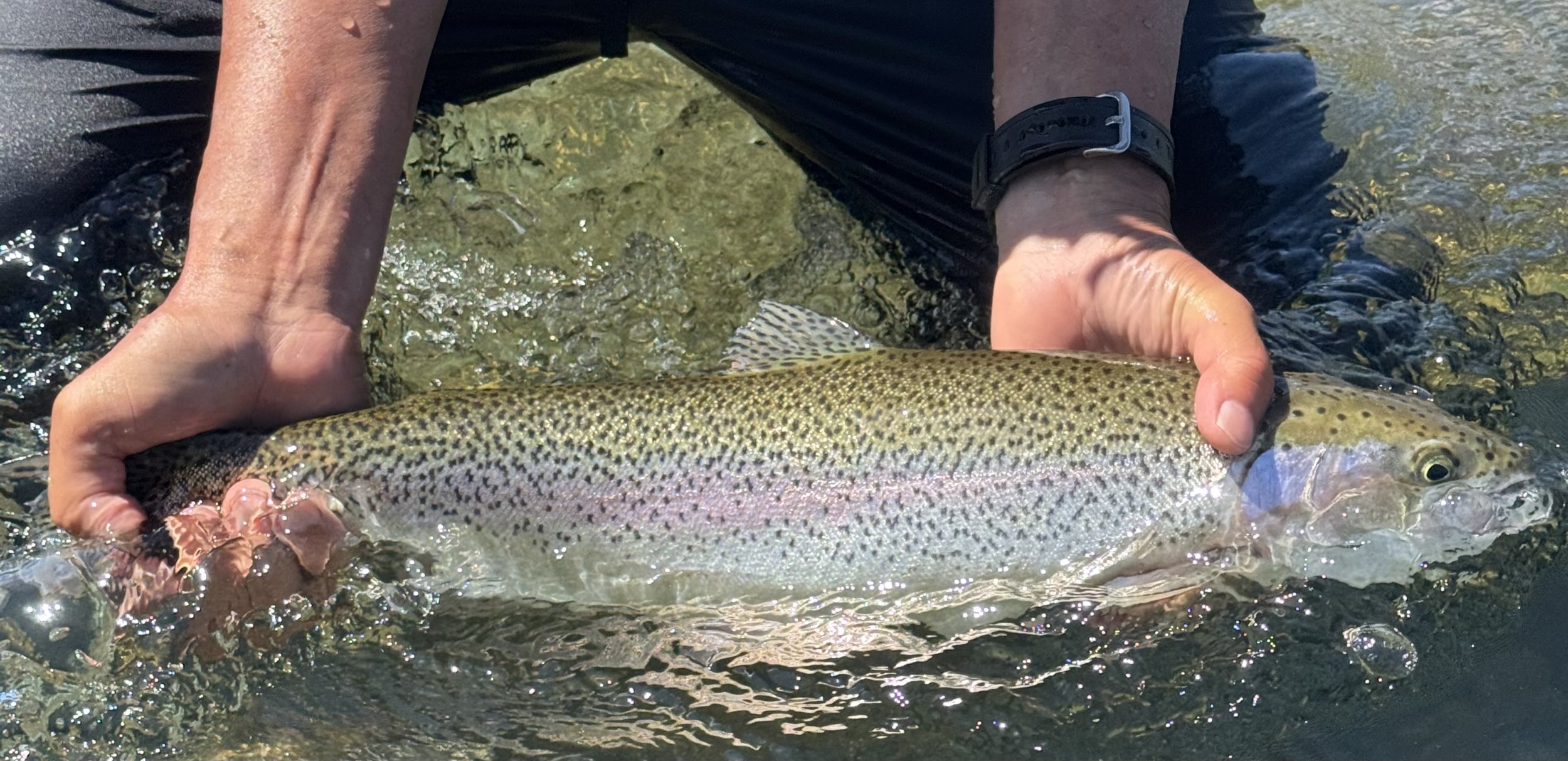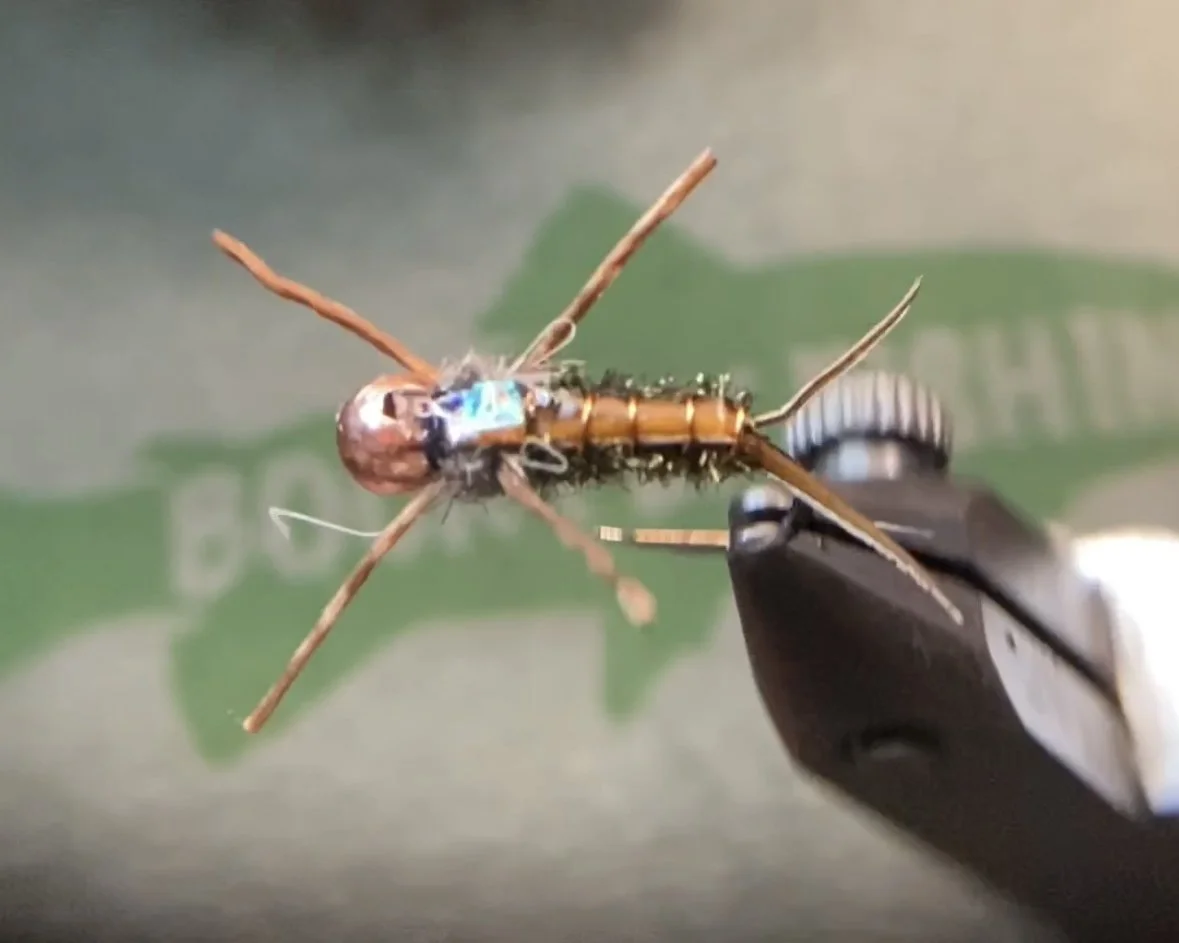
Fly Fishing 101
Fly Fishing 101
Learn, Improve, Explore
Whether you're picking up a fly rod for the first time or refining your skills, Fly Fishing 101 is your ultimate resource. From casting techniques and gear recommendations to expert tips and local fishing insights, we’ve got you covered. Dive into our free tutorials and start your journey toward becoming a more confident, successful angler.
Learn the essentials. Elevate your skills. Catch more fish.
California’s Central Valley Steelhead: A Story of Resilience, Rivers, and Rods
Meet the rainbow trout with a wanderlust problem: some leave home, bulk up in the ocean, and return to freshwater like heavyweight champions. These are steelhead — anadromous athletes of the river world, surviving epic migrations, dodging dams, and fighting their way upstream year after year. Want to know what makes Central Valley steelhead different from their Pacific Rim cousins, why Indigenous peoples relied on them for millennia, and where to find these silver rockets today? Dive into the full story and follow their incredible journey, one cast at a time
Fly Highlight: the Hella Stoned Fly
How one high-water day on the Yuba led to a trout-slaying stonefly pattern
When Trout Eat Foam: The Dry Fly Rig Every Angler Should Be Using Right Now
If you’ve never fished a hopper-dropper rig before—or never even heard of one—this post is for you. And if you have, but still aren’t sure how, when, or where to fish it in northern California, we’re about to change that too.
The 5 Essential Knots Every Angler Should Know
You don’t need to know every knot ever tied by human hands—but the right five, tied well, can carry you through 90% of fly fishing situations. The trick is knowing them well enough that they’re second nature.
When Water Hits 65 °F: Time to Hang Up Your Fly
Trout are cold-blooded, oxygen-loving, stress-prone creatures. They thrive in water between 50–60 °F. Once temps hit 65 °F, the river might still look fishable—but beneath the surface, things are falling apart.
This isn’t about being overly cautious. It’s about knowing the biology and making the right call.
Central Valley Kings:
Think salmon are just dinner? Think again. These fish helped build California’s fertile valley, fought their way through dams and droughts, and still make grown anglers weep with joy (or frustration). PJ dives into the wild history of Central Valley Chinook, why they matter, why they’re delicious near the ocean (and not so much upriver), and what it’s like to guide for them in Alaska — all with a dash of humor, a splash of passion, and maybe a subtle plea to not screw it up forever.
High-Stick Legends and Euro Myths
The California Roots of Tight Line Nymphing (And Why It’s Not Cheating)
Let’s clear the air right now—Euro nymphing isn’t new. It’s not mystical. And it’s not cheating, unless catching more fish than your buddy counts as unsportsmanlike conduct (in which case: guilty).
Truth is, folks in California were tight-lining wild trout before Euro nymphing had a passport or a passport stamp. You could say we were into it before it was cool, and without the skinny jeans.
A Tale of Two Trout: Hatchery vs. Wild
Every river tells a story. And if you listen closely—wading shin-deep, rod in hand, heart full of hope—you’ll start to hear the dialogue between two kinds of trout: one raised by human hands, the other shaped by generations of cold, wild water.
This is the story of two fish. It’s the story of rivers. And if you’re not out there chasing them, let me just say—you’re missing something rare. Like watching a thunderstorm roll in over a canyon. Like holding a piece of living art in your hands… and letting it slip back into the current.
So let me introduce you.
The Dance of the Hydropsyche Caddis
When the Poppies Bloom, the River Comes Alive
The Feather River is alive. Beneath its surface, an unseen world hums with energy—trout lurking in pockets of soft current, stoneflies clinging to boulders, and one of the most important insects in the river’s ecosystem quietly working its magic: the Hydropsyche caddis.
If you’ve spent any time on the Feather, you’ve probably fished around them—whether you knew it or not. They’re not as flashy as a salmonfly or as delicate as a mayfly, but to a hungry trout, they’re a floating buffet, present almost year-round in some form.
For fly anglers, understanding the Hydropsyche caddis isn’t just helpful—it’s essential.
The Feather River’s Journey: Life, Fish, and the Call of the Wild
Discover the untold story of the Feather River—where ancient landscapes, Native heritage, and the wild rush of salmon collide. From gold rush chaos to modern conservation, this river’s journey is as captivating as the fish that call it home. Dive in and explore its rich history, legendary fishery, and the wild beauty that keeps anglers coming back.
The Bug Buffet: A Fly Angler’s Guide to Trout Food
If you want to catch more fish, you need to understand what’s on the menu. Trout are selective feeders, and their diet is driven by the insect life in their environment. Knowing how these bugs live, hatch, and behave helps you pick the right fly and fish it the right way.
In this guide, we’ll break down the three major insect groups—Mayflies, Caddisflies, and Stoneflies—and touch on some other key food sources like Midges, Scuds, and Sow Bugs. We’ll also highlight where to find these insects in Northern California and how they impact trout feeding behavior.
The Sacramento River: California’s Largest and Best Trout Stream
The Sacramento River is the lifeblood of Northern California’s fisheries, offering diverse angling opportunities from wild trout in the Upper Sacramento to trophy rainbow trout, steelhead, and striped bass in the Lower Sacramento. This legendary river has something for every angler, whether you prefer casting dry flies in rugged mountain canyons or drifting nymphs through deep, slow-moving tailwaters.
















